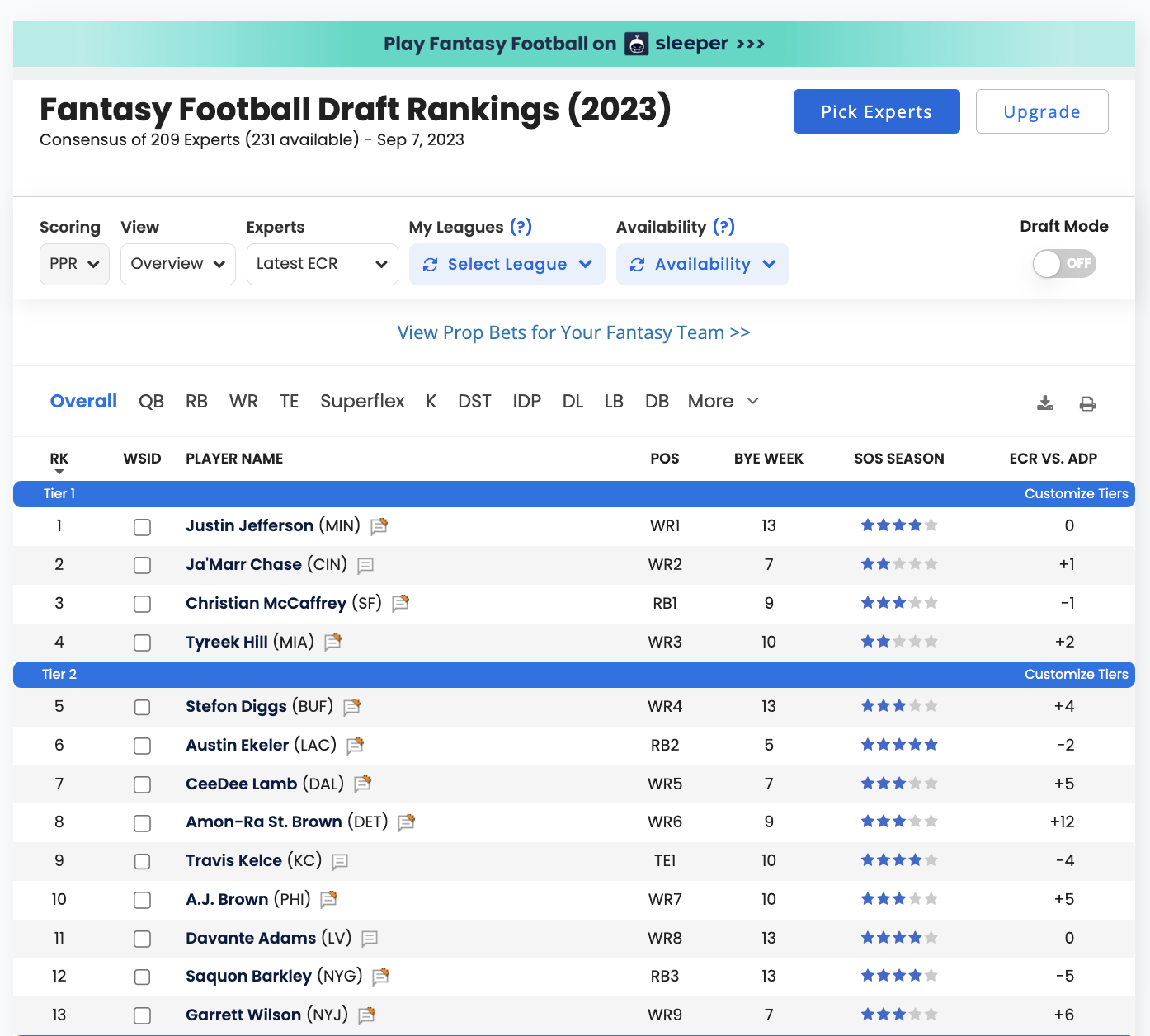Alright, let’s talk about this ECR thing in fantasy football. I remember when I first really got serious about my home league, maybe five or six years back. Before that, I just kinda winged it, picked my favorite players, you know?

But then I wanted to actually win. So, I started looking up rankings online. Man, what a mess. One site had a guy ranked top 5, another had him outside the top 15. Who do you even trust? I spent hours bouncing between different websites, getting more confused than anything else. It felt like every “expert” had a wildly different opinion.
Finding a Better Way
I was venting about this to a buddy in my league, complaining about how all the rankings were all over the place. He casually mentioned something about looking at “consensus rankings”. I hadn’t really paid attention to that term before. So, I decided to dig into it.
Turns out, ECR stands for Expert Consensus Rankings. Pretty simple idea, really. Someone, usually a platform or a website that aggregates this stuff, takes the rankings from a whole bunch of different fantasy football analysts – guys and gals who do this for a living – and basically averages them out. They might throw out the highest and lowest ranks sometimes, but the core idea is finding the average opinion.
Putting It Into Practice: Draft Day
My first real test with ECR was during my draft prep that year. I found a site that listed these ECRs clearly. Instead of jumping between ten tabs, I had one list that sort of smoothed out all the crazy hot takes from individual analysts. It felt… safer? More grounded.
- It helped me spot players who were consistently ranked high across the board.
- It also highlighted guys where the experts really disagreed – those were the players I knew I needed to research more myself.
- During the actual draft, having that ECR list handy was great. If a player I liked was falling way below their ECR, it felt like a potential steal. If someone reached way above ECR, I felt better about letting them go.
Didn’t mean I followed it blindly, mind you. You still gotta have your own gut feelings and target players you believe in. But it gave me a solid baseline, a reality check against my own biases.
Using ECR During the Season
After the draft, I realized this wasn’t just a one-time tool. Most places update the ECR weekly. So, I started using it for those tricky waiver wire decisions. Who’s the consensus top add this week? Helps cut through the noise.
Same for start/sit decisions. Got two running backs with similar matchups? Checking the weekly ECR for that position often gave me a nudge in one direction. It’s like getting a quick poll of a bunch of smart fantasy minds.
What I Learned: It’s Not Perfect
Now, I gotta be real. ECR isn’t foolproof. It’s a tool, not an oracle.

Sometimes, the consensus is just… wrong. A player breaks out that nobody saw coming, or a trusted veteran falls off a cliff. ECR can sometimes be slow to react to breaking news like injuries that happen right before kickoff, because it takes time for all the experts to update their individual ranks and for the average to catch up.
You still absolutely need to do your own homework. Watch the games, read news updates, understand player usage and matchups. Don’t just grab the ECR list and switch your brain off.
How I Use It Now
So, yeah. That’s my journey with ECR. Nowadays, checking the Expert Consensus Rankings is just part of my regular fantasy football routine. I use it for draft prep, weekly rankings, waiver claims – the whole nine yards. But I treat it as a starting point, a guide. It helps me organize my thoughts and sanity-check my own opinions against the broader expert community. It simplified my process quite a bit, and honestly, it’s made me feel more confident in my decisions, even if they don’t always pan out!


















